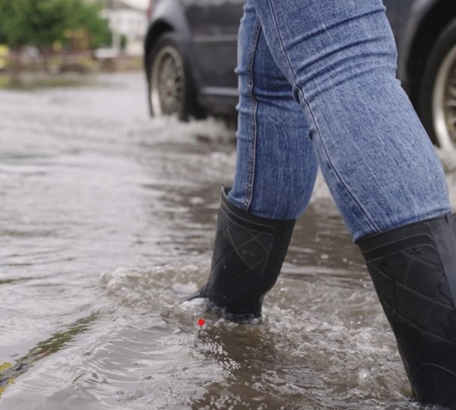
At the height of recent heavy rains, many of Warwickshire’s roads were covered in surface water, which has led to questions being asked about the capacity of the drains in the county to cope.
Warwickshire County Council has responded to some of the questions being asked on social media and clarified the process for clearing drains, after comments suggesting that they were blocked and causing rainwater to back up.
Warwickshire County Council is responsible for the maintenance of over 110,000 drains, or gullies, which are cleaned and emptied on a regular basis depending upon their risk of becoming blocked.
Higher risk drains are identified by area surveyors, with their local knowledge of known sites and issues, along with information provided by the Council’s Flood Risk Management Team. Local County Councillors also provide an insight into their areas and any issues they might be facing locally.
In recent years officers have also gathered data of how much silt was in each gully when they were emptied. This has helped the council to set a variable frequency for cleaning each drain.
Those with higher silt levels were set for more frequent emptying, depending on risk factors (including flood prone areas etc). Drains in more problematic areas are cleaned every three* or six months** depending on the level of risk.
The aim for other drains, which had very little silt in them, is to clean on an annual basis although that is not always possible due to the sheer numbers of drains involved. The Council does commit, however, to cleaning all drains at least every two years, as part of the County Council’s Highways Service Standards.
The numbers
*1,225 gullies every 3 months (so total 4,900 visits / year)
** 12,257 gullies every 6 months (so total 24,514 visits / year)
*** 48,025 gullies every 12 months (total of approx 77,500 visits per year)
There is often a perception that surface water flooding such as to the highways is due to insufficient or blocked drainage. Whilst this is occasionally the case, more often than not, it is due to the rainfall intensity being higher than what can enter the drain at that time. After a short time, this water will drain away.
The Council has stressed the important part that the public can play in protecting the county.
Reporting flooding, particularly where it enters homes or businesses, is important. It helps the County Council to prioritise resources, and to investigate if it can secure funding to reduce the risk of flooding in the area.
Flooding can be reported online at https://www.warwickshire.gov.uk/reporthighwayproblem
County Council members also have a delegated budget for improvements to highways in their wards. They can use that to pay for additional gully cleaning if requested to do so by residents and if the need is identified. Residents are urged to make local members know of any potential problem drains.
Following last week’s heavy rains, the County Council’s Flood Risk Management Team has been following up on all reports of internal property flooding. It has engaged with those who have reported the flooding directly or with reports received from partner agencies, news reports or social media to confirm the extents of the flood.
Cllr Jan Matecki, portfolio holder for transport and planning with Warwickshire County Council, said: “The work that goes on throughout the year to keep drains clean will have played an important role in protecting the county from the worst effects of the recent heavy rains.
“The important thing for us is knowing where there might be a problem so we can respond even when the weather is fine, looking at potential problems with drains and sorting them. Local knowledge is critically important so I urge people to use the reporting tool to let us know where there might be a problem.”